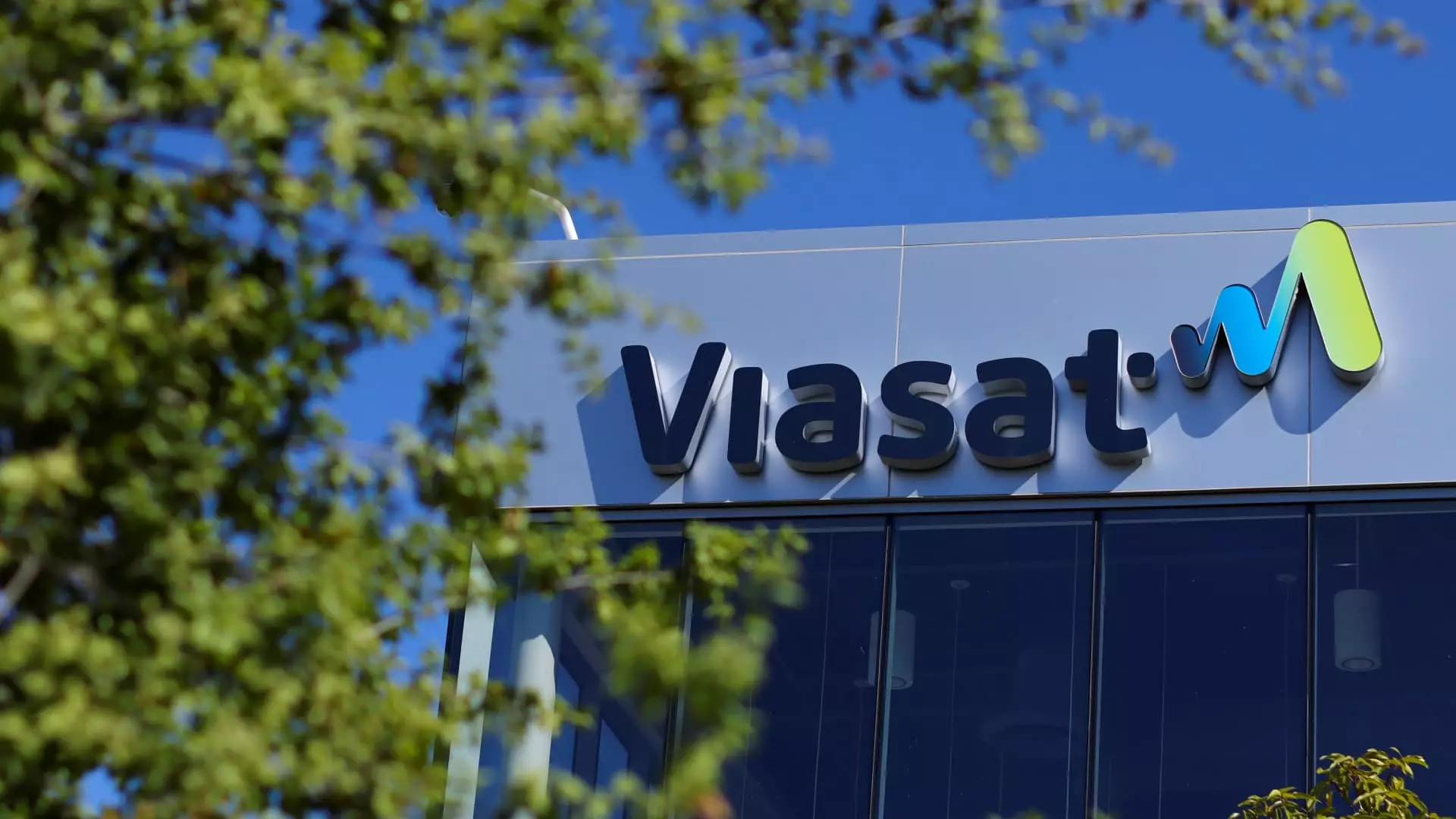In the ever-volatile realm of satellite connectivity, Viasat has made headlines recently, experiencing a striking 30% uptick in stock value as of early 2025. This surge, catalyzed by an endorsement from Deutsche Bank analyst Edison Yu, reflects broader market sentiments and investor confidence. Yu’s upgrade of Viasat ‘s stock from “hold” to “buy” sends a clear signal that the market sees potential in the company, particularly as it navigates a competitive landscape dominated by the likes of Elon Musk’s Starlink.
However, investors should tread carefully. While the stock is indeed rising, the endorsement comes with its share of ambivalence. Yu acknowledges that Viasat faces formidable challenges from Starlink, which continues to consolidate its grip on the global satellite internet market. The recent deals struck by Musk with Indian telecom giants to expand Starlink’s reach illustrate a clear and present danger for Viasat’s long-term viability. This dichotomy between immediate stock performance and looming competitive threats creates a complicated scenario for investors looking for sustained growth.
Navigating a Competitive Landscape
Viasat’s ascension in the market may seem impressive, yet it is essential to scrutinize the trajectory ahead. The company’s ability to deleverage its balance sheet, as highlighted in Yu’s analysis, is vital for maintaining its competitive edge. The potential strategies for asset monetization he proposed could herald a transformative phase for Viasat, but these plans are not without risk. The 12-18 month timeframe for these strategies to unfold suggests a shaky road ahead, where investor patience will be tested.
Starlink’s relentless expansion acts as a double-edged sword. On one hand, it elevates industry standards and encourages innovation among competitors. On the other hand, it threatens Viasat’s existing market share and profitability, notably in regions where Starlink is actively seeking partnerships. The competition underscores a significant question: can Viasat adapt quickly enough to maintain its relevance?
Risks vs. Reward: A Cautious Optimism
The upward trend in Viasat’s share price has come during a particularly tumultuous period for the broader equity markets. The S&P 500 dipped over 2%, making Viasat’s 30% gain all the more compelling in comparison. Yet, it would be unwise to ignore the role of speculative dynamics in this situation. A stock may rise significantly not only due to strong fundamentals but also as a result of traders capitalizing on analyst chatter or broader market perceptions.
While Yu’s optimistic prognosis implies a strong reward for investors willing to hold out, understanding the risks is paramount. Starlink’s growing international presence could stymie Viasat’s potential if the latter fails to innovate. In this context, agility becomes crucial; the company must unveil new offerings or enhancements that entice consumers and retain existing clients.
The situation undoubtedly reflects the complexities of the tech-driven connectivity market. Investors would do well to examine Viasat not merely as a standalone entity, but within the swirling currents of industry evolution driven by technology, consumer preferences, and competitive strategies. The outcomes in the next year will undoubtedly shape perceptions of Viasat, but for now, it stands at a critical junction, balancing opportunity with the specter of substantial competition.

